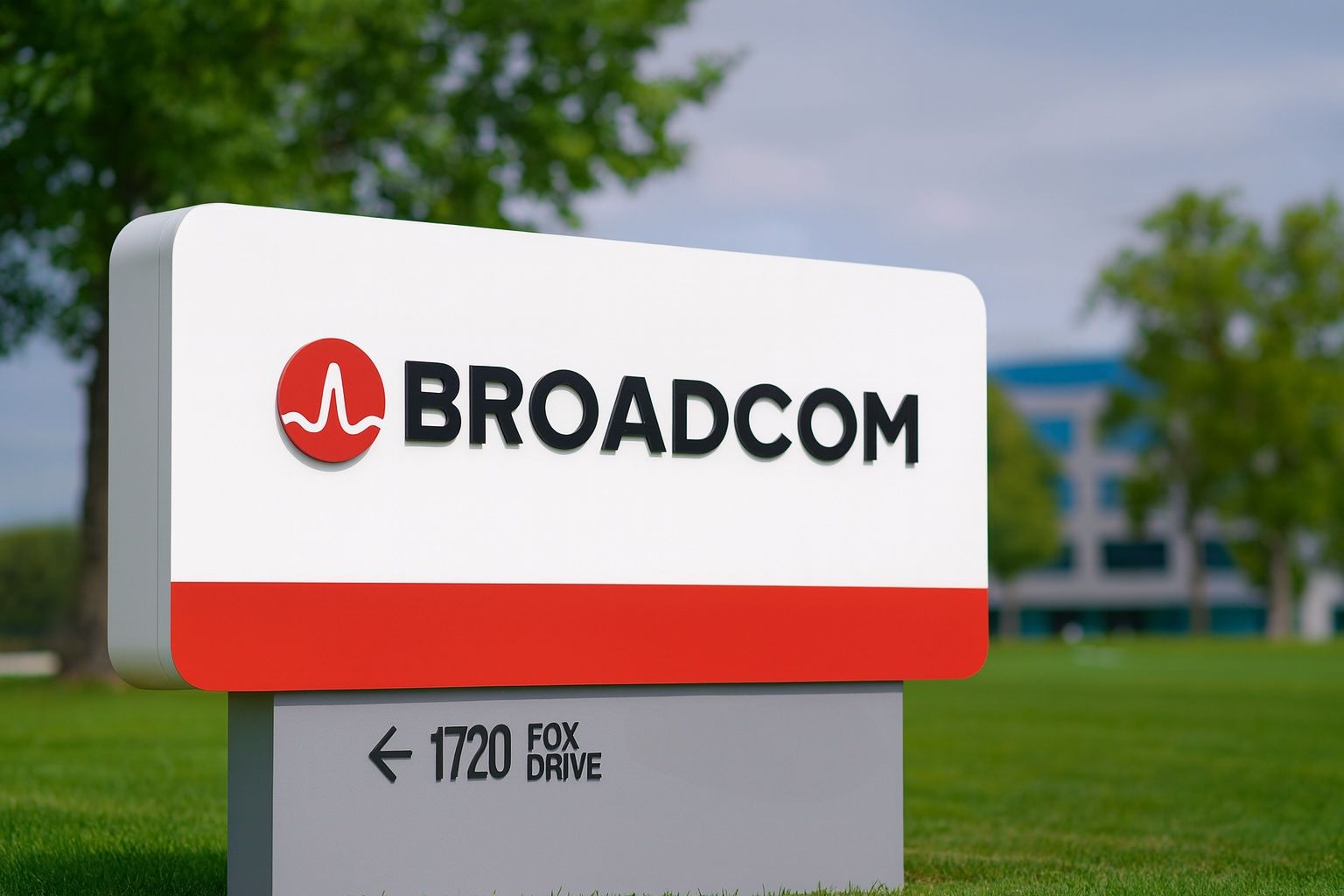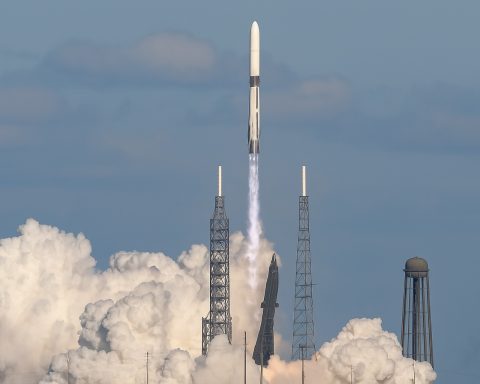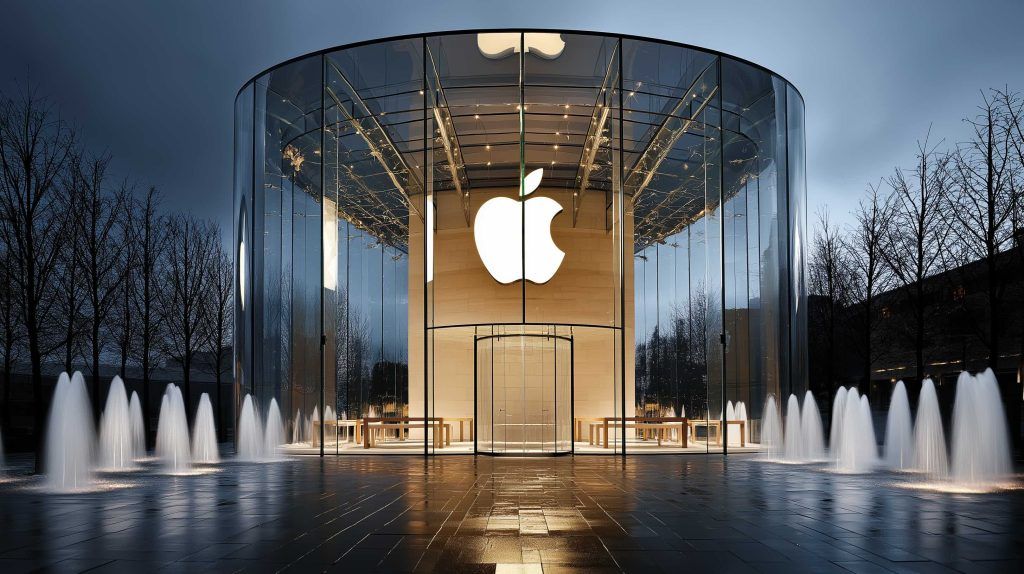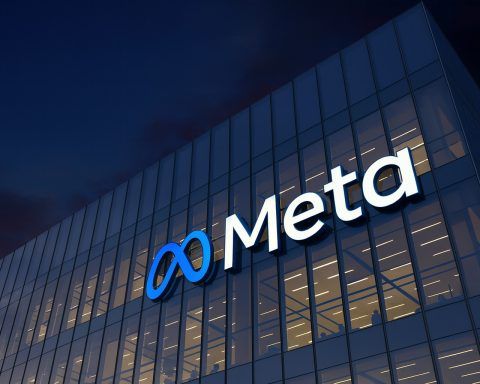Broadcom Inc. (NASDAQ: AVGO) was swept up in a brutal tech and AI selloff on Thursday, with the stock dropping sharply even as the company rolled out new VMware Cloud Foundation initiatives and continues to post record AI-driven results.
Key takeaways for Broadcom stock today
- AVGO finished around $340 per share, down roughly 4%–5% on the day, after trading as low as the mid‑$330s and as high as the mid‑$350s. [1]
- Intraday reports showed losses as steep as 5.5%–7% as AI-focused megacaps led a market-wide risk-off move. [2]
- A wider $700+ billion wipeout in tech market cap hit AI plays such as Nvidia, Tesla, Alphabet – and Broadcom, which alone shed an estimated $90 billion in value at one point. [3]
- The selling is being driven by AI “bubble” worries, delayed macro data after the U.S. government shutdown, and fading expectations for rapid Fed rate cuts. [4]
- At the same time, Broadcom is expanding its VMware Cloud Foundation (VCF) ecosystem with new AI‑focused certifications, open networking initiatives and fresh hardware partners – a long-term positive for its infrastructure software franchise. [5]
- Institutional investors remain heavily involved: multiple 13F filings released today show large asset managers increasing or establishing sizeable stakes in AVGO. [6]
- Fundamentally, Broadcom’s fiscal Q3 2025 revenue hit a record ~$16 billion, up 22% year over year, with AI chip revenue surging about 63% to $5.2 billion, and Q4 guidance pointing to further double‑digit growth. [7]
Here’s what moved Broadcom stock on November 13, 2025, and what it could mean for investors watching AVGO.
Broadcom stock today: how far did AVGO fall?
By the closing bell on Thursday, Broadcom shares were changing hands at roughly $340, down about 4.3% from the prior session. Data from multiple price providers shows: [8]
- Last close: about $339.98–$340.00
- Dollar move: roughly –$15 on the day
- Percentage move: around –4.3%
- Intraday range: roughly $334 (low) to $353 (high)
- Volume: more than 22 million shares, above a typical daily average near 17–18 million. [9]
Intraday coverage earlier in the session painted an even uglier picture. Mid‑day, commentary from The Motley Fool and other outlets pegged the decline at around 5.5%, while broader AI‑sector roundups cited losses as large as ~7% at the lows before a partial recovery into the close. [10]
Despite today’s hit, Broadcom stock is still up more than 40% year to date and close to doubling over the past 12 months, reflecting how far the name has run during the AI boom. [11]
Why Broadcom stock is sinking today
Today’s selloff in Broadcom has very little to do with company‑specific bad news and almost everything to do with the macro backdrop and AI sentiment.
1. AI valuation hangover and “bubble” fears
For weeks, analysts have warned that AI‑linked tech stocks may have run ahead of fundamentals. New research pieces published today highlight: [12]
- A concentrated cluster of AI “superstar” stocks – including Nvidia, Broadcom, Tesla, Palantir and high‑growth software names – dominating the list of worst performers in the S&P 500.
- Rising concern that AI valuations are stretched, with some private companies (like OpenAI) sporting eye‑watering valuations and certain public names trading at extremely high forward earnings multiples.
A separate AI‑sector dispatch noted that Nvidia fell roughly 4% and Broadcom about 5%–6% on the day, reinforcing the view that the market is rotating out of the most crowded AI winners rather than targeting one company in isolation. [13]
Motley Fool’s Broadcom‑focused piece summed it up bluntly: investors are “continuing to move out of AI stocks in response to valuation concerns,” with Broadcom swept up in that trade even after a massive run earlier in 2025. [14]
2. Government shutdown fallout and missing macro data
Broadcom’s slump is also wrapped up in Washington drama.
Coverage today points out that the recent U.S. government shutdown – though now ended – has disrupted key economic reports, including October jobs and inflation data. Some of this data may arrive late, and other series may not be released at all. [15]
That matters because:
- The Federal Reserve’s December meeting was widely expected to bring another rate cut.
- With less visibility into inflation, the Fed may hesitate to ease policy, or at least sound more cautious. [16]
- Higher‑for‑longer rates depress valuations for long‑duration growth stocks – including AI leaders like Broadcom whose cash flows extend far into the future.
Parameter’s analysis of AVGO’s move today explicitly tied the 5.5%+ intraday drop to this combination of AI profit‑taking and uncertainty around December rate cuts as missing inflation data clouds the Fed’s view. [17]
3. A brutal day for AI and chip megacaps
Broadcom wasn’t alone. Across Wall Street:
- Reuters reported that the S&P 500 fell about 1.7%, the Nasdaq around 2.3%, and the Dow roughly 1.7%, with “steep losses in Nvidia and other AI heavyweights” leading the decline. [18]
- A Benzinga market wrap estimated that more than $700 billion in tech market value was erased Thursday, with Broadcom singled out among the worst hit AI names. It cited AVGO down roughly 7% intraday, wiping out nearly $90 billion in market cap at one point. [19]
- MarketWatch’s live blog noted that Nvidia, Tesla and Broadcom were taking the largest “bites” out of the S&P 500, making them some of the top individual drags on the benchmark index. [20]
- Barchart and Nasdaq commentary both highlighted chipmakers broadly under pressure, with Broadcom down more than 4% alongside ARM, Intel, Lam Research and others. [21]
Bloomberg similarly framed Broadcom’s move — a drop of about 4.3% — as part of a “risk aversion” swing that hit high‑flying AI names as hopes for aggressive rate cuts dimmed. [22]
VMware Cloud Foundation: bullish news overshadowed by the selloff
Ironically, some of today’s Broadcom‑specific headlines are actually positive.
Broadcom advances open ecosystem for VMware Cloud Foundation
On November 12–13, Broadcom announced a major expansion of its open ecosystem for VMware Cloud Foundation (VCF), its flagship private cloud stack. Press releases and industry coverage highlight several key moves: [23]
- Open ecosystem positioning: Broadcom wants VCF to be a private cloud alternative to hyperscalers, able to run across a wide mix of data‑center and edge hardware.
- VCF AI ReadyNodes: New certifications for CPU/GPU/accelerator‑based AI ReadyNodes enable customers to deploy AI training and inference workloads on validated systems from multiple vendors.
- ODM self‑certification: An ODM self‑certification program via the Broadcom Technology Alliance Program broadens the pool of hardware partners and speeds time to market.
- Open networking strategy: Broadcom is embracing EVPN/BGP‑based open networking, aligning with fabrics such as Cisco Nexus One and supporting SONiC, giving customers more flexibility in how they build their networks.
- Kubernetes and AI: VMware vSphere Kubernetes Service (VKS) has reached Certified Kubernetes AI Conformant status, underscoring the platform’s readiness for AI‑native workloads.
The upshot: Broadcom is trying to turn VMware into a more flexible, open, AI‑ready private cloud platform, rather than a closed ecosystem – a message aimed squarely at enterprise buyers worried about being locked in.
Why this matters for AVGO’s stock story
These announcements come against a backdrop of controversial VMware licensing and partner program changes that have frustrated many long‑time VMware customers and providers. Over the past few months, Broadcom has: [24]
- Overhauled the VMware Cloud Service Provider (VCSP) program,
- Set hard deadlines around October 31 and November 1, 2025 for non‑renewing partners,
- And pushed many customers toward subscription bundles and authorized partners.
Industry articles describe customer anger, budget pressures and even trust erosion around the VMware deal, even as Broadcom’s infrastructure software revenue has grown rapidly. [25]
Today’s VCF ecosystem expansion is, in part, a reputational repair effort: Broadcom is signaling to enterprises that VMware Cloud Foundation can be more open, interoperable and attractive for AI and edge workloads — all of which support the long‑term software and recurring revenue story that underpins AVGO’s valuation.
Big money moves: institutional investors keep buying Broadcom
While short‑term traders sell on AI and macro fears, institutional investors are not heading for the exits. A cluster of 13F filings dated November 13, 2025 show several large asset managers increasing their exposure to AVGO: [26]
- Los Angeles Capital Management LLC
- Lifted its stake to 3,305,382 Broadcom shares, adding just over 1,200 shares in Q2.
- The position is worth roughly $911 million and represents about 3.4% of the firm’s portfolio, making Broadcom its 5th largest holding. [27]
- Midwest Trust Co
- Established a new position of 529,840 shares, valued around $146 million.
- AVGO now accounts for about 2.0% of its portfolio and ranks as its 6th biggest position. [28]
- Freemont Management S.A.
- Boosted its Broadcom stake by 30.5% in the second quarter to 60,400 shares, making the stock its 10th largest holding at roughly 2.5% of assets. [29]
- Mirabaud Asset Management Ltd
- Increased its position by 42.5% to 12,894 shares, worth about $3.47 million and representing 1.6% of its portfolio (the fund’s 23rd largest holding). [30]
MarketBeat’s aggregation of analyst ratings further shows that Broadcom remains widely favored on Wall Street:
- 3 analysts rate AVGO “Strong Buy,” 29 rate it “Buy,” and only 2 call it a “Hold,”
- With a consensus price target around $372.52 — roughly 10% above today’s ~$340 level. [31]
None of this guarantees future performance, but it does underline that today’s selling is not (so far) being driven by a mass institutional exodus.
Fundamentals check: Broadcom’s AI and software engine
To understand the disconnect between strong fundamentals and weak price action today, it’s worth revisiting Broadcom’s most recent results.
Record Q3 2025 numbers
In early September, Broadcom reported fiscal Q3 2025 results that were widely viewed as impressive: [32]
- Revenue: about $16.0 billion, up 22% year over year and slightly ahead of consensus estimates (~$15.8–$15.95 billion).
- Semiconductor solutions revenue: roughly $9.2 billion, up in the mid‑20% range year over year.
- Infrastructure software revenue (including VMware): around $6.8 billion, up in the mid‑teens to low‑40% range depending on segment breakout.
- AI semiconductor revenue: about $5.2 billion, up ~63% year over year, marking ten consecutive quarters of AI revenue growth.
- Gross margin: near 78%, with adjusted EBITDA up around 30% to more than $10.7 billion, underscoring hefty operating leverage.
Q4 guidance was equally robust, with Broadcom projecting roughly $17.4 billion in Q4 revenue, implying mid‑20s percent growth, and expecting AI chip revenue to climb to about $6.2 billion. [33]
AI mega‑deals and custom chips
Several analyses tie this AI growth to large, custom chip deals with top-tier AI and cloud players:
- Commentary from tech and finance outlets discusses a $10 billion+ custom AI chip order from a leading model developer, with some sources pointing to OpenAI as a key customer and others suggesting Anthropic may also be in the mix. Broadcom hasn’t officially named the buyer, so these identifications remain analyst speculation. [34]
- Regardless of the exact customer names, the message is that Broadcom is becoming a central supplier of custom AI accelerators and networking gear to hyperscale data‑center operators – a structurally attractive position if AI spending stays elevated.
Given that backdrop, many strategists still classify AVGO as a core long‑term AI infrastructure play, even as they acknowledge that short‑term air is coming out of the AI trade. [35]
Key AVGO stock metrics in focus
For investors tracking Broadcom stock around today’s move, a few numbers stand out: [36]
- Price (Nov. 13, 2025 close): ~$340
- Single‑day move: about –4.3% (after being down ~5.5–7% intraday)
- 52‑week range: roughly $138 to $386
- 1‑year performance: close to +100% over the past 12 months
- Average daily volume: around 17.5 million shares
- Today’s volume:>22 million shares, reflecting heavy trading and likely institutional repositioning
- Analyst consensus rating: leaning strongly “Buy”, with consensus target near $372.52
- Institutional ownership: about 76% of shares held by institutions, according to MarketBeat’s aggregation of filings.
These figures underscore the core tension today: AVGO is a richly valued, widely owned AI leader, which makes it particularly vulnerable when the market decides to de‑risk the AI trade — even if company‑specific news is positive.
What’s next for Broadcom stock?
1. December 11 earnings catalyst
Broadcom has already announced that it will report fiscal Q4 2025 and full‑year results on Thursday, December 11, 2025, after the market close, followed by a conference call at 2:00 p.m. PT / 5:00 p.m. ET. [37]
Investors will be looking for:
- Confirmation that AI chip revenue is tracking toward the ~$6.2 billion guidance,
- Updates on VMware integration, customer retention and the new VCF ecosystem,
- Commentary on AI spending plans for 2026–2027, especially around custom silicon,
- And any hints about capital returns, including dividends and buybacks.
Given how much of Broadcom’s valuation is tied to its AI and software story, this earnings report could be a major volatility event for AVGO stock.
2. AI sentiment and power/infrastructure bottlenecks
The Benzinga piece that tallied the $700+ billion tech wipeout also highlighted a new worry for AI: power and infrastructure constraints. Analysts warn that electricity supply and data‑center build‑outs could become a governing constraint on AI growth, potentially slowing deployment timelines or squeezing margins. [38]
For Broadcom, which sits at the intersection of networking, accelerators and data‑center infrastructure, these concerns are a double‑edged sword:
- They could delay some customer deployments, pressuring near‑term growth if hyperscalers slow capex.
- But they also underscore the importance of efficient, custom silicon and networking, which plays into Broadcom’s strengths.
3. VMware customer sentiment and cloud competition
Broadcom’s VCF ecosystem push is clearly designed to make VMware more competitive as a private cloud platform against hyperscalers like AWS, Azure and Google Cloud. [39]
But investors will be watching:
- Whether new AI ReadyNodes and open networking initiatives are enough to retain customers spooked by licensing changes,
- How quickly new partners and OEMs ramp certified VCF systems,
- And whether VMware can regain the trust of enterprises who have flirted with alternative virtualization or cloud strategies after the acquisition. [40]
Bottom line: a volatile day, not a broken thesis
On November 13, 2025, Broadcom stock was caught in the crossfire of AI bubble fears, macro uncertainty and a broad tech de‑risking, leading to a 4%–5% daily decline and intraday losses approaching 7%. [41]
Yet the fundamental narrative — rapid AI chip growth, high‑margin software and a strategic push to make VMware Cloud Foundation a leading private‑cloud platform — hasn’t changed overnight. Recent filings show institutions still adding to positions, and Wall Street’s consensus remains firmly in the “buy” camp with price targets above today’s level. [42]
For traders, AVGO is likely to remain volatile as the market digests AI valuations, interest‑rate expectations and the fallout from the government shutdown. For longer‑term investors, the key questions are whether Broadcom can:
- Keep compounding AI and networking revenue at the pace signaled in its Q3 and Q4 outlook,
- Successfully navigate VMware’s customer backlash while expanding the VCF ecosystem, and
- Maintain pricing power and high margins in a more competitive AI hardware landscape.
As always, this article is for informational purposes only and does not constitute investment advice or a recommendation to buy or sell any security. Anyone considering Broadcom stock should evaluate their own risk tolerance, time horizon and financial situation — and, ideally, consult a qualified financial adviser.
References
1. www.investing.com, 2. finviz.com, 3. www.benzinga.com, 4. finviz.com, 5. www.ciodive.com, 6. www.marketbeat.com, 7. investors.broadcom.com, 8. www.investing.com, 9. www.investing.com, 10. finviz.com, 11. finviz.com, 12. www.investopedia.com, 13. markets.chroniclejournal.com, 14. finviz.com, 15. finviz.com, 16. www.reuters.com, 17. parameter.io, 18. www.reuters.com, 19. www.benzinga.com, 20. www.marketwatch.com, 21. www.barchart.com, 22. www.bloomberg.com, 23. www.ciodive.com, 24. intelisys.com, 25. virtualizationreview.com, 26. www.marketbeat.com, 27. www.marketbeat.com, 28. www.marketbeat.com, 29. www.marketbeat.com, 30. www.marketbeat.com, 31. www.marketbeat.com, 32. investors.broadcom.com, 33. www.investing.com, 34. www.ainvest.com, 35. seekingalpha.com, 36. www.investing.com, 37. www.stocktitan.net, 38. www.benzinga.com, 39. www.ciodive.com, 40. virtualizationreview.com, 41. finviz.com, 42. www.marketbeat.com








